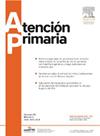[关于疼痛的无益观点:初级保健中的简要疼痛建议]。
IF 1.8
4区 医学
Q2 MEDICINE, GENERAL & INTERNAL
引用次数: 0
摘要
在慢性非肿瘤性疼痛方面,建议与通常的临床实践之间存在差距。要改善这种状况,必须消除患者和医疗专业人员对疼痛的不良观念。我们要解决的文化观念包括:认为疼痛意味着感觉到疼痛的组织受到了损害、疼痛源自感觉到疼痛的部位、休息对组织愈合很重要,或者药物和手术是治疗疼痛的最佳方法。首先,专业人员需要反思自己的信念,质疑自己的临床实践:我对疼痛的信念是什么?这些信念是否符合当前的证据?我是否遵循了临床实践指南的建议?这样,通过将自己的信念与证据相统一,专业人员就能够开始向患者提供适当的教育建议。本文章由计算机程序翻译,如有差异,请以英文原文为准。
Falsas creencias en torno al dolor. Consejos educativos breves en la consulta de atención primaria
In chronic non-oncological pain, there is a gap between the recommendations and the usual clinical practice. To improve this situation, it is essential to address unhelpful beliefs about pain in patients and health professionals. We address cultural beliefs such as thinking that pain means damage to the tissue where it is felt, that pain originates in the area where it is perceived, that it is important to rest for the tissues to heal, or that drugs and surgery are the best treatments for pain.
First, professionals need to reflect on their own beliefs and question their own clinical practice: what do I believe about pain? Are these beliefs in line with current evidence? Do I follow the recommendations of clinical practice guidelines? In this way, by aligning their beliefs with the evidence, professionals will be able to begin to give appropriate educational advice to patients.
求助全文
通过发布文献求助,成功后即可免费获取论文全文。
去求助
来源期刊

Atencion Primaria
医学-医学:内科
CiteScore
2.90
自引率
8.00%
发文量
156
审稿时长
33 days
期刊介绍:
Atención Primaria es una revista que publica trabajos de investigación relativos al ámbito de la atención primaria de salud. Desde el punto de vista conceptual, Atención Primaria asume el nuevo modelo de atención primaria de salud, orientado no sólo a la curación de la enfermedad, sino también a su prevención y a la promoción de la salud, tanto en el plano individual como en el de la familia y la comunidad. En estos nuevos aspectos que definen el modelo de atención primaria de salud es en los que se centran los trabajos de investigación que publica Atención Primaria, la primera revista de originales española creada para recoger y difundir la producción científica realizada desde los centros de atención primaria de salud sobre cuestiones como protocolización de la asistencia, programas de prevención, seguimiento y control de pacientes crónicos, organización y gestión de la asistencia primaria, entre otros.
 求助内容:
求助内容: 应助结果提醒方式:
应助结果提醒方式:


